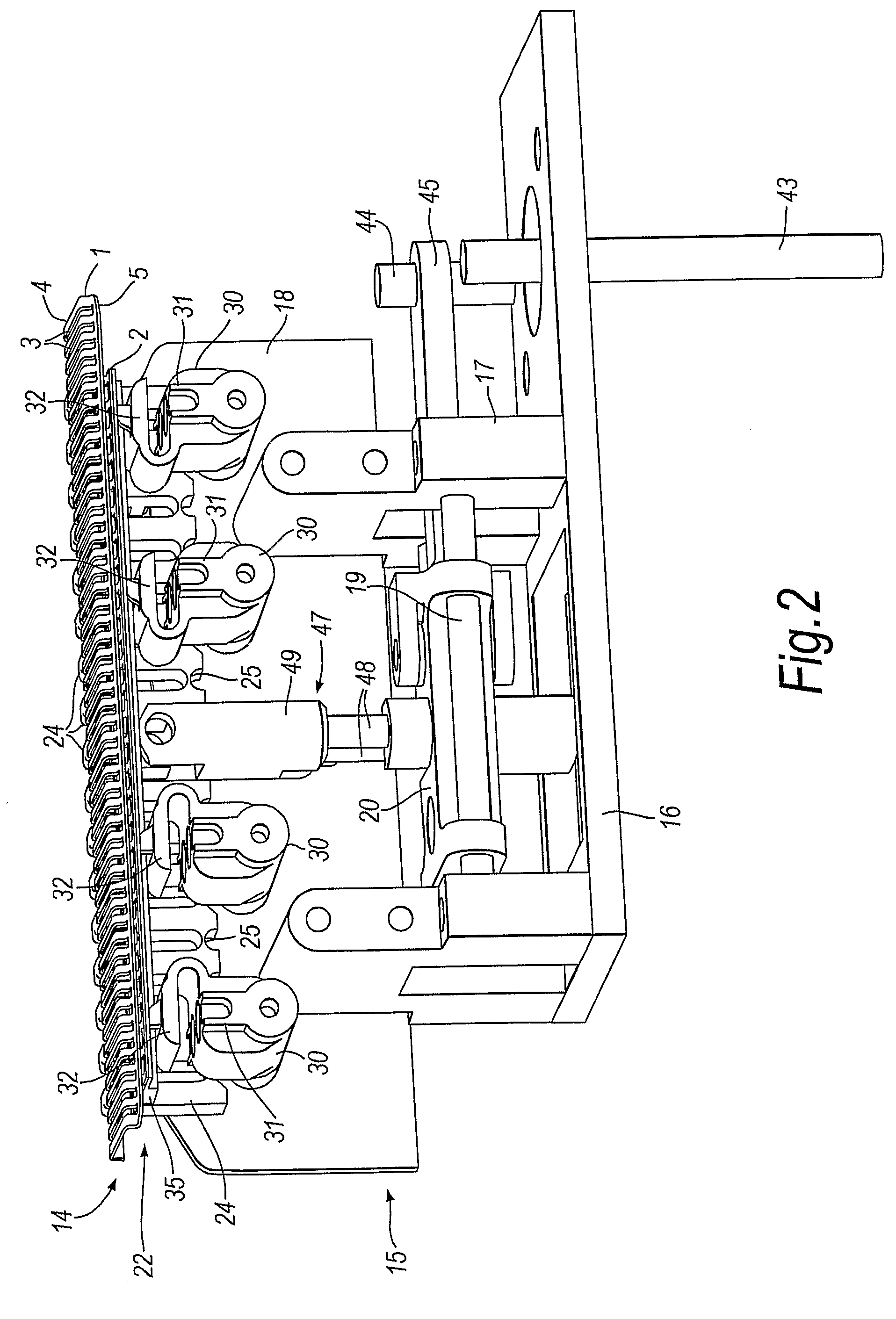Electric razor assembly
a technology of electric razors and parts, applied in the direction of metal working devices, etc., can solve the problems of undesirable movement of outer foils, and achieve the effect of improving contact and conformity
- Summary
- Abstract
- Description
- Claims
- Application Information
AI Technical Summary
Benefits of technology
Problems solved by technology
Method used
Image
Examples
Embodiment Construction
[0019]The electric razor assembly illustrated in the drawings has an outer flexible foil 1 with an upper surface for contact with the skin during shaving, and a lower surface for engagement by an undercutter consisting of an inner flexible foil 2. The outer foil has a shallow stepped profile with a main central part 4 that has openings 3 for hairs to be cut to pass through the foil, and lateral edge portions 5 which are positioned a short distance below the central part 4. The small difference in height between the central part 4 and the lateral edge portions 5 allows the foil to be supported at the edges without impeding contact between the central part 4 and the skin being shaved. Protruding from each side edge 5 of the outer foil 1 is a pair of teeth 6 defining detent notch 7 for anchoring the outer foil at a medial location along the foil as will become clear from the description that follows. The inner foil 2 is basically similar in form to the outer foil with openings 8, a rai...
PUM
 Login to View More
Login to View More Abstract
Description
Claims
Application Information
 Login to View More
Login to View More - R&D
- Intellectual Property
- Life Sciences
- Materials
- Tech Scout
- Unparalleled Data Quality
- Higher Quality Content
- 60% Fewer Hallucinations
Browse by: Latest US Patents, China's latest patents, Technical Efficacy Thesaurus, Application Domain, Technology Topic, Popular Technical Reports.
© 2025 PatSnap. All rights reserved.Legal|Privacy policy|Modern Slavery Act Transparency Statement|Sitemap|About US| Contact US: help@patsnap.com



